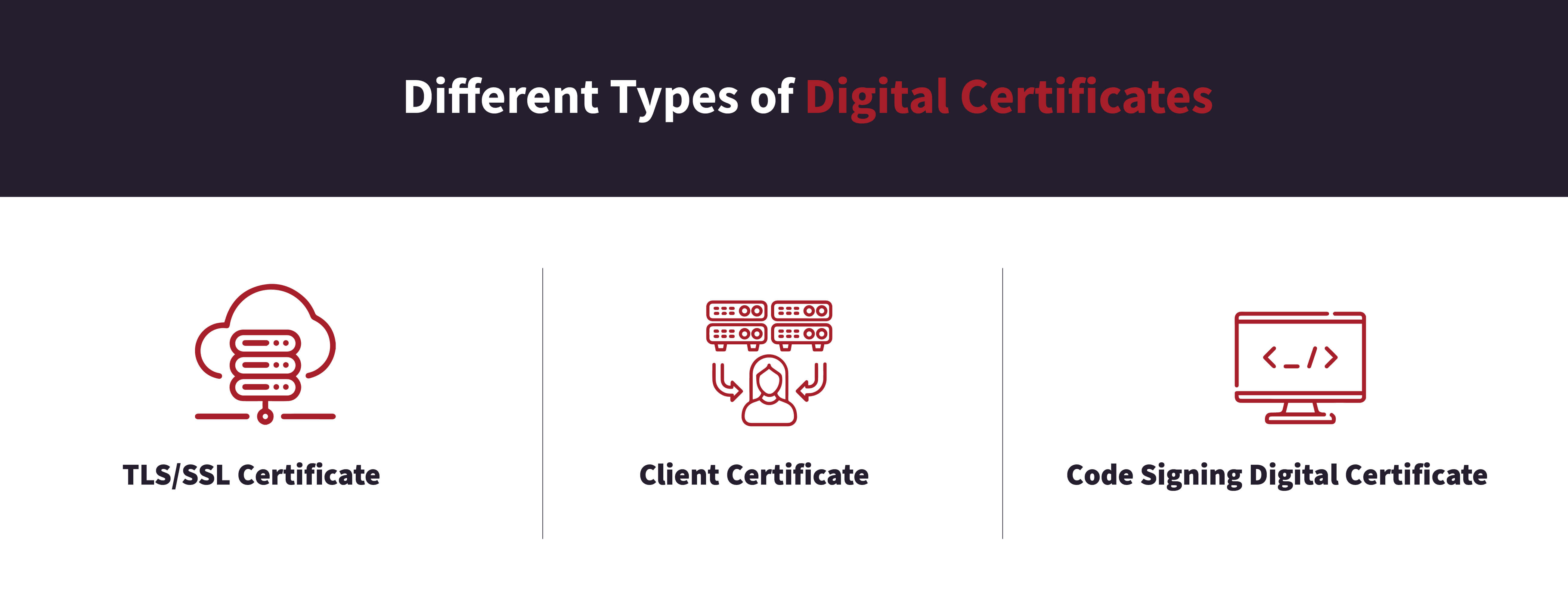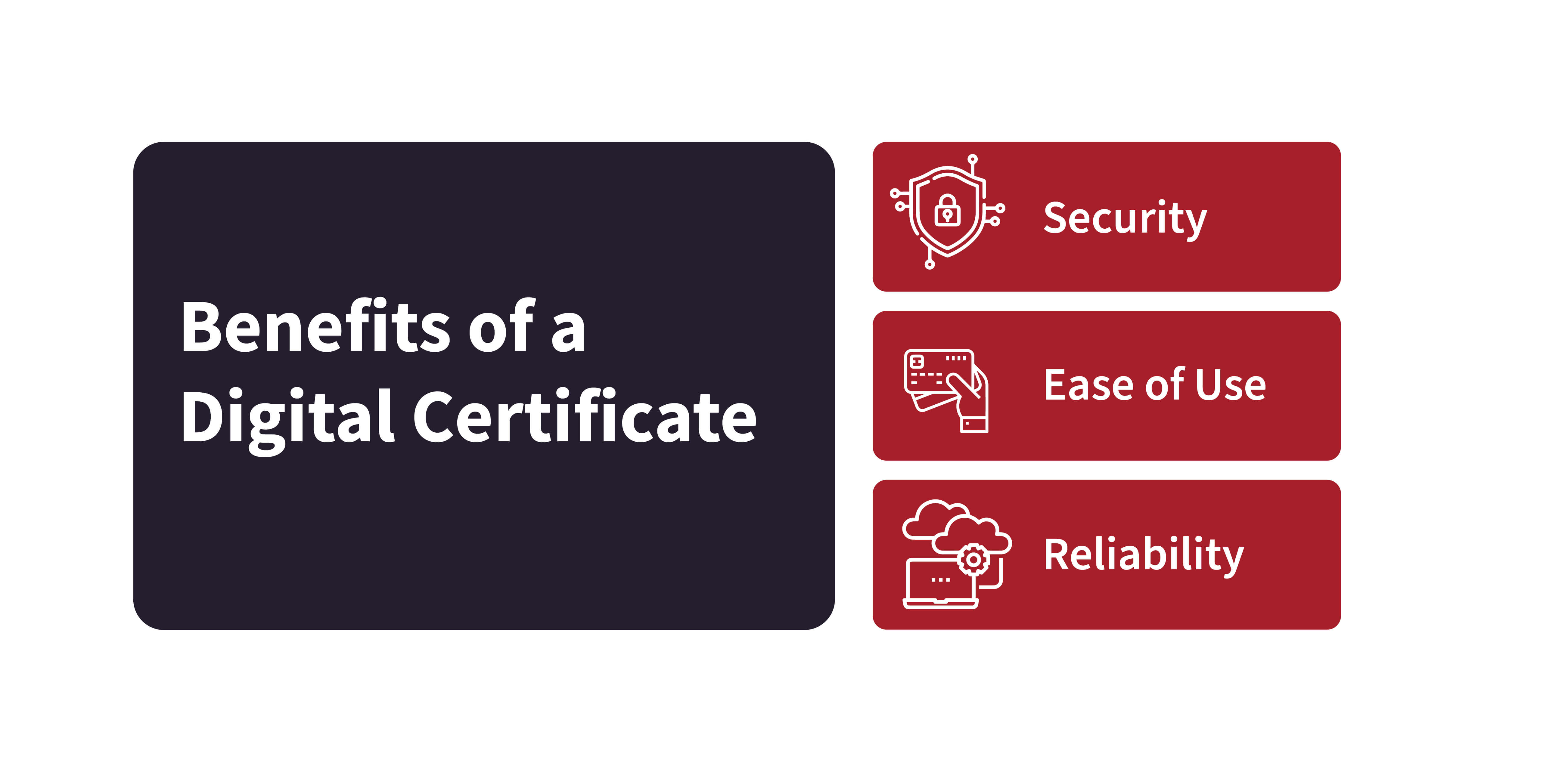We live in a world where everything has been digitalised. From art to currency, all essentials are readily available online. While this is a good thing for convenience and reaching out to more people and sources, digitalisation is the top reason for increased cyber-attacks.
However, thankfully with inventions such as digital certificates, the possibility of cyber risks has decreased manifold. But what is a digital certificate, and should you get one? Dive in further to explore all the details.
What Is a Digital Certificate
A digital certificate is a password or file electronically produced that proves whether a server or device is authentic or not. It does so through public key infrastructure (PKI) and cryptography.
Further, this certificate links the authentic entity with the public key's ownership, ensuring that only trusted users and devices can connect with the networks. Also known as an identity certificate or public key certificate, you can conveniently use the digital certificate to share data online through the public key infrastructure.
But why do you or any other organisation demand such security on the internet anyway? For starters, when the internet was first built, it wasn't created while keeping in mind security elements. However, as more and more businesses and people have started using it now, access to everything has become faster and cheaper, resulting in increased criminal activities on the internet.
This downside has made the internet vulnerable to many dishonest gains. And if this tool aims to succeed as a communication and business invention, it should be secure for people using it. Therefore, innovations like digital certificates are considered a blessing for those who earn through the internet and use it as a tool to gain success.
How Does a Digital Certificate Work?
A digital certificate has many different components. For instance, it contains all the identifiable information, including the name of the user or company using it and a serial number or IP address of a file.
What's more, each certificate consists of a public key copy obtained from the certificate holder. This copy is matched with a private key to evaluate whether it's real or not. Finally, generated by certificate authorities, this certificate is signed to authenticate the user's identity requesting it.
Prominent Features of a Digital Certificate
Below are some prominent features of this certificate that helps it perform its job perfectly.
- A digital certificate allows various entities to share the public key, so it receives authentication. This property allows this certificate to initialise Secure Sockets Layers (SSL) connections between web servers and browsers.
- This certificate also helps encrypt all the external and internal communication to keep all data secure from hackers. It prevents data interpretation, creating a layer of safety between the data and a possible cyber-criminal.
- Many IoT (internet of things) devices and mobile environments use digital certificates to protect wireless networks and various websites.
- Digital certificates offer both small and big businesses high-quality encryption, ensuring that these certificates are easy to revoke or renew and can be managed centrally.
- A website with a digital certificate gives an impression of authenticity, which helps build public trust.
Use Case of Digital Certificates
Here are some everyday use cases of digital certificates.
- Most debit and credit cards have embedded digital certificates. This helps connect various banks with the user and merchant, ensuring the safety and privacy of all transactions performed.
- Digital certificates are also quite effective in validating domain issues for a website.
- Most digital companies use these certificates to validate their kiosks and teller machines.
- Many companies are now opting to use these certificates and attach them to their IoT devices. This measure can help them curb any cyber attacks.
- Digital certificates also assist consumers. For instance, before sharing your card details with any online store, you can always check their certificate to ensure that CA validates your identity. Many websites have the option of "Certificates" in their menu bar for all the details.
Different Types of Digital Certificates
Here are some common types of digital certificates:

TLS/SSL Certificate
This certificate is placed on a mail, web server and application and makes sure that all the communication between various clients is safe and private. Further, this digital certificate sends an authentication to a server, so it can receive and send all encrypted messages from or to the clients.
A TLS/SSL certificate can be domain, organisation or extended validated. A domain-validated certificate doesn't offer much assurance to the certificate's holder. Also, they don't provide any guarantee about the entity.
On the other hand, organisation-validated and extended validation certificates are much more efficient. In addition, they generate additional assurance, and interestingly, you can't get an extended validation certificate without proving your identity to the CA.
Client Certificate
This digital ID identifies a machine to another machine or a user to a device. For example, have you ever sent an email after signing it digitally? That's an example of a client certificate.
Code Signing Digital Certificate
This category of digital certificates is used by people or organisations that publish software. These certificates validate the authenticity of software codes signed by various public keys.
Benefits of a Digital Certificate
Taking the above point one step further, here are some ways a digital certificate can benefit you or an organisation.

Security
A digital certificate helps keep your sensitive data safe from cyber-attacks by validating the system and the party with which you want to share your information.
Ease of Use
This certificate is digitally embedded in most debit or credit cards and is super convenient. Plus, many websites have published their certificates on their website, making authentication easier.
Reliability
Digital certificate security ensures no information provided is being tampered with, resulting in increased public trust and reliability of the data.
Digital Certificates Vs Digital Signatures
Both digital certificates and digital signatures are extraordinary security measures. But the story behind them and their implementation procedures are pretty different. For instance, a digital certificate is a file that works like an identification card, validating the authenticity and reliability of a device or a server.
However, on the other hand, a digital signature is an approach or a mechanism that verifies the authenticity of a document, transaction or message. This method uses numeric strings to perform this task. A signature confirms to the receiver that any message received was sent by the original sender and had no modifications created by a third party.
Unlike a digital certificate, all digital signatures appear as hashed. And to decrypt a transaction or message, the receiver has to perform a similar hash function.
Tessaract: The Optimal Digital Signing Solution
So, whether you are an individual or an organisation, the security of your data is pretty crucial in these vulnerable times. Start your digital transformation roadmap with creating digitally signed documents as wet signatures (or physical signatures) are becoming a remnant of the past.
Work smarter with Tesseract, an excellent digital signing solution that makes the entire process quite convenient for you. It does so by providing you with an integrated and end-to-end signing workflow. You can sign a document or digital form in just under two minutes and send to it the relevant parties as needed. Learn how to do so in our comprehensive digital signing guide here.
You can also find out how to digitally sign on Tessaract using Singpass in this guide here. You simply have to start with generating a document and fill it with all the required data. Then add in fields such as signature and dates. Finally, use the feature of Singpass and digitally sign on your screen before saving your signed documents on the cloud.
Power your business with Tesseract's digital signing solution, an effective corporate tool that can also help you sequence signatures in your preferred order and view your signatures' current status. With such a convenient automated solution, your security of documents is always above the expected standards and you can reduce time spent on repetitively handling documents and focus on more key tasks..
